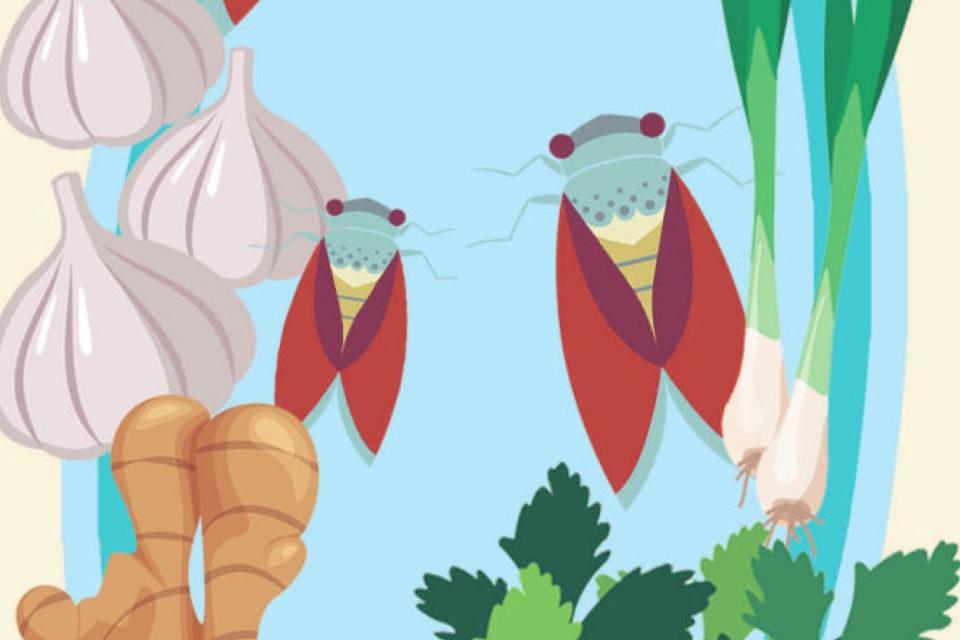From tacos to stir fry, here's how to cook the cicadas coming to Missouri
The cicadas are almost here and that means full bellies for many animals — and that could include you!
People have been eating cicadas for centuries. Let's dive into the history and science of eating these intriguing insects and learn how to do it safely.
A brief history of cicadas in cuisine
Eating insects, also known as entomophagy, is a practice that dates back thousands of years and is still common in many cultures around the world.
Cicadas have been on the menu in ancient Greece, China, Malaysia, Burma, Latin America, and the Congo region.
Periodic cicadas, which emerge every 13 or 17 years, are particularly noted in American history. Native Americans used them as a food source, and early European settlers documented their recipes and experiences with cicada foods.
Cicadas are a good source of protein and are low in fat. They also provide key nutrients like iron and zinc. For those curious about sustainable eating, cicadas are an eco-friendly option because they require far fewer resources to grow and harvest than traditional food.
Of course, there is a downside. You need to get your fill of these while you can as the buffet only comes around every 13-17 years!
How to safely prepare cicadas

If you're interested in trying cicadas, here’s how you can do so safely.
Know when and where to collect: Collect cicadas when they have just emerged from their shells and are still soft, usually early in the morning. Make sure to gather them from areas that are free of pesticides and other chemicals.
Preparation: Once collected, cicadas should be frozen for at least 24 hours. This not only kills them humanely, but also helps in the cleaning process. Before cooking, boil the cicadas for a few minutes to ensure they are clean and to reduce any potential pathogens.
Cooking: Cicadas can be prepared in many ways. They can be roasted, fried, or even ground into flour to make cicada cookies or bread. Always ensure they are cooked thoroughly to avoid any health issues.
Allergy advice: If you're allergic to shellfish, you might also be allergic to cicadas since they contain similar proteins.
If you are interested in trying cicadas, here are some ideas that others have loved. Simply search online to easily find the full recipes, or click through to the Google Doc in the online version of this story.
Spicy popcorn cicada
Think of popcorn shrimp — but just a little buggier. Boil and bread some cicadas and fry in oil until crisp. Dip in cocktail sauce.
Actual cicada popcorn
Who doesn’t love popcorn? Fry up some cicadas and season with paprika, garlic, cayenne pepper, salt, pepper and a little lime and add to a bowl of popped corn. Enjoy with a good movie.
Cicada cookies
We all love sweets! Add some protein to your sweets by boiling and finely chopping cicadas. Add them to your favorite cookie recipe to turn your cookie into a meal — kind of.
Stir fry night
Stir fry is a healthy dinner and you can make it even healthier by replacing your protein choice with cicadas. Boil the cicadas first, then prepare your stir fry as you normally would.
Taco Tuesday — with a buzz
You know where this is going. Boil, season, then fry up some cicadas then make taco night for your family.
Cicada egg rolls
This one takes more effort as you’ll need to make your own egg rolls, but well worth it. Look up your typical pork egg roll recipe and replace the pork with stir-fried cicadas.
No questions this week! You won’t have time for questions with all the cooking you are going to be doing. Enjoy!
Mike Szydlowski is a science teacher and zoo facilitator at Jefferson STEAM School.
LAST WEEK'S QUIZ ANSWERS
How did the wild horse herds in Missouri originate?
The wild horse herds in Missouri originated during the Great Depression in the 1930s. As families in the Ozarks faced severe economic hardships, they were forced to abandon their homes and leave their domesticated horses behind.
What is the typical social structure of a wild horse herd?
A typical wild horse herd in Missouri consists of about five to 15 individuals. Each herd is usually led by a dominant mare, who makes decisions on the move; and a protective stallion, who guards the group against predators and threats.
Why did the National Park Service propose removing the wild horses?
The National Park Service proposed removing the wild horses from Missouri's public lands because they were considered non-native, or "feral," and were thought to be harmful to the ecosystem.
How did the local community react to the proposal to remove the wild horses, and what was the outcome?
The local community strongly opposed the National Park Service's proposal to remove the wild horses, viewing them as an integral part of the region's cultural heritage.
What measures are currently being taken to manage the wild horse populations in Missouri?
Measures include monitoring the population sizes, implementing fertility control measures to prevent overpopulation, and occasionally relocating horses to ensure their numbers remain sustainable and do not harm the ecosystem.
This article originally appeared on Columbia Daily Tribune: From tacos to stir fry, here's how to cook the cicadas coming to Missouri

